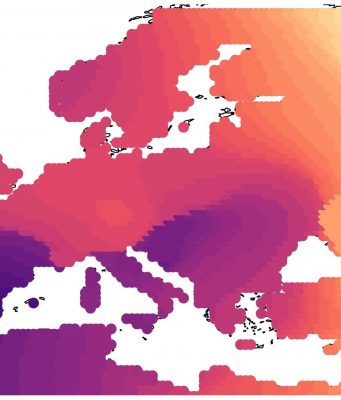The Aroeira 3 cranium.Credit: Javier Trueba.
A large international research team, directed by the Portuguese archaeologist João Zilhão and including Binghamton University anthropologist Rolf Quam, has found the oldest fossil human cranium in Portugal, marking an important contribution to knowledge...
Virtual reconstructions of the Xuchang 1 and 2 human crania are superimposed on the archeological site where they were discovered.Credit: Xiujie Wu
Two partial archaic human skulls, from the Lingjing site, Xuchang, central China, provide a new window into the...
Image Credit: Flickr/Erich Ferdinand
Deep in the caves of Goyet in Belgium researchers have found the grisly evidence that the Neanderthals did not just feast on horses or reindeer, but also on each other.
Human bones from a newborn, a child...
University of Tübingen researchers found evidence of a link between cranial features and language spoken. They compared the measurements of skulls from Africa, Asia, and Oceania between certain points (marked yellow).Credit: University of Tübingen
University of Tübingen researchers have found...
Credit: University of Bristol
An inter-disciplinary team of scientists and archaeologists have discovered widespread evidence of prehistoric milk production in southern Europe.
The study uncovered evidence that humans have been utilising milk and dairy products across the northern Mediterranean region from...
Evolution purged many Neanderthal genes from human genome. Credit: Jaysmark, Flickr, CC BY
Larger populations allowed humans to shed weakly deleterious gene variants that were widespread in Neanderthals
Neanderthal genetic material is found in only small amounts in the genomes of...
Bodies buried by family members were arranged in a flexed position on their side (left), while in atypical burials, bodies were left in more awkward positions (right).Credit: Illustration: Caitlin McPherson
There is significant variation in how different cultures over time...
Relationships between the ancestors of modern humans and other archaic populations such as Neanderthals and Denisovans were likely more complex than previously thought, involving interbreeding within and outside Africa, according to a new estimator developed by geneticists. Findings were...
David Frayer, KU professor emeritus of anthropology, is lead author on a recent study published in the Journal of Evolution that found striations on teeth of a Homo habilis fossil 1.8 million years old moved from left to right,...
Extensive heat treatment in Middle Stone Age shows that controlled use of fire may have occurred at early stage of tool and blade production. The photo shows heated artefacts in silcrete made by Homo sapiens at Klipdrift Shelter, South...
There is no truth to the popular belief that members of the so-called baby boomer generation have a greater work ethic than people born a decade or two later. This is according to a team of US researchers led...
















